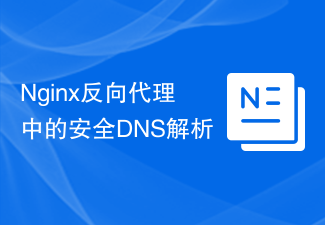Java language is a programming language widely used in web applications. In terms of Web security, Java has many advantages over other programming languages, such as Java's security model, strong support for Java virtual machine and Java platform security performance, making Java the preferred language for enterprise-level applications and Web applications. This article will introduce Web security applications in the Java language.
- Usage of HTTP and HTTPS
The most common protocol in web applications is HTTP (Hypertext Transfer Protocol). HTTP is a clear text transmission protocol, and all data is transmitted in clear text. Therefore, through the HTTP protocol, anyone can view and modify the data.
HTTPS (Hypertext Transfer Protocol Secure) is an HTTP protocol based on the SSL (Secure Sockets Layer) protocol. HTTPS uses the SSL/TLS encryption protocol to encrypt data. SSL uses public key certificates and private keys to establish a secure connection.
Java provides HTTP and HTTPS APIs for the development of Web applications, such as the HttpURLConnection class and the HttpsURLConnection class.
- Input Validation
Input data received by the web application needs to be validated. Input validation is an important measure against web attacks, preventing malicious users from injecting code into applications or performing attacks.
Java provides many input validation APIs and frameworks, such as Apache Commons Validator and JSR 303 Bean Validation.
- Common Web Attack Types
Common Web attack types include SQL injection, cross-site scripting (XSS) attacks, and cross-site request forgery (CSRF) attacks.
SQL injection attack is to inject malicious SQL code into a web application in order to access or modify the database. PreparedStatement class in Java prevents SQL injection attacks.
XSS attack is to inject malicious scripts or codes into web applications to steal user information or perform other malicious behaviors. JSP (Java Server Pages) and JSTL (JavaServer Pages Standard Tag Library) in Java prevent XSS attacks.
CSRF attacks exploit vulnerabilities in web applications to perform malicious behaviors by forging requests. CSRF protection in Java requires the use of a token mechanism.
- Data Encryption
Sensitive data in web applications should be encrypted. Java provides many encryption algorithms and APIs, such as AES, DES, and RSA algorithms. Java's encryption API can be used to encrypt and protect sensitive data in web applications.
- Security Management
Java provides many security management tools and itself provides many security mechanisms. Java's security management tools can help developers implement security management of web applications, such as access control, permission management, and data protection.
Java's security management mechanism can ensure the security and integrity of Web applications and protect Web applications from Web attacks.
Summary:
Java is a programming language with powerful security and performance, and is the preferred language for Web applications. In terms of web security, Java provides many APIs and frameworks for preventing web attacks and improving the security of web applications. Developers should pay attention to input validation, data encryption, and security management in web applications to ensure the security and integrity of web applications.
The above is the detailed content of Introduction to Web Security Applications in Java Language. For more information, please follow other related articles on the PHP Chinese website!
 Intel TXT是什么?Jun 11, 2023 pm 06:57 PM
Intel TXT是什么?Jun 11, 2023 pm 06:57 PMIntelTXT是Intel公司推出的一种硬件辅助安全技术,它可以通过在CPU和BIOS间建立一个受保护的空间,来确保服务器在启动时的完整性和安全性。TXT的全称是TrustedExecutionTechnology,也就是可信执行技术。简单来说,TXT是一种安全技术,它可以提供硬件级别的保护,确保服务器在启动时没有被恶意程序或未经授权的软件修改。这一
 如何使用PHP预防HTTP响应拆分攻击Jun 24, 2023 am 10:40 AM
如何使用PHP预防HTTP响应拆分攻击Jun 24, 2023 am 10:40 AMHTTP响应拆分攻击(HTTPresponsesplittingattack)是一种利用Web应用程序处理HTTP响应的漏洞,攻击者通过构造恶意HTTP响应将恶意代码注入到合法响应中,来实现攻击用户的目的。PHP作为一门常用的Web开发语言,也面临着HTTP响应拆分攻击的威胁。本文将介绍如何使用PHP来预防HTTP响应拆分攻击。了解HTTP响应拆分攻击
 比亚迪与Stingray合作打造令人安全愉悦的车载娱乐空间Aug 11, 2023 pm 02:09 PM
比亚迪与Stingray合作打造令人安全愉悦的车载娱乐空间Aug 11, 2023 pm 02:09 PM比亚迪官方微信公众号发布消息称,比亚迪与音乐媒体科技公司Stingray达成合作协议,计划从2023年起在新能源汽车上引入Stingray交互式车载KTV产品,并在全球多个市场推广据报道,比亚迪与Stingray合作开发的娱乐系统将为比亚迪的新能源汽车增加更多娱乐功能,以满足用户多样化的需求。该娱乐系统将支持多种语言,提供用户友好的界面设计,使用户能够方便地按照歌曲的标题、艺术家、歌词或流派进行搜索。此外,该系统每月将自动更新曲目,为用户带来全新的音乐体验为了确保驾驶安全,当车辆处于驾驶模式时,
 Nginx反向代理中的安全DNS解析Jun 11, 2023 am 09:51 AM
Nginx反向代理中的安全DNS解析Jun 11, 2023 am 09:51 AM随着网络应用的不断发展,我们需要越来越多的安全措施来保护我们的数据和隐私。其中,安全DNS解析是一项非常重要的措施,它可以保护我们不被恶意DNS服务器攻击。在Nginx反向代理中使用安全DNS解析也同样很重要。本文将讨论Nginx反向代理中的安全DNS解析,并介绍如何设置。什么是DNS解析?DNS(DomainNameSystem)解析是将域名转换为IP
 如何防范网络键盘记录器?Jun 11, 2023 pm 03:03 PM
如何防范网络键盘记录器?Jun 11, 2023 pm 03:03 PM在互联网时代,信息泄漏已经成为了我们生活中非常普遍的现象。其中,网络键盘记录器是一种非常高效的黑客攻击工具,通过记录用户输入的内容,窃取用户账号密码等敏感信息,对个人隐私和财产造成威胁。因此,如何有效地防范网络键盘记录器,成为了我们互联网使用者所面临的一项重要挑战。本文将为大家介绍几种避免成为网络键盘记录器受害者的方法。定期更新操作系统和软件网络键盘记录器多
 可信计算技术在数据共享领域的应用Jun 11, 2023 am 08:49 AM
可信计算技术在数据共享领域的应用Jun 11, 2023 am 08:49 AM随着数据产生和流动的加速,数据共享成为了信息领域中一个越发重要的议题。在数据共享的过程中,数据安全与隐私一直是人们所关注的问题之一。而可信计算技术的出现,为保障数据安全和隐私提供了一种新的解决方案。本文将从可信计算技术原理、数据共享场景、技术应用等方面介绍可信计算技术在数据共享领域的应用。一、可信计算技术原理可信计算技术(TrustedComputing
 Nginx安全更新的一些建议Jun 10, 2023 am 11:03 AM
Nginx安全更新的一些建议Jun 10, 2023 am 11:03 AMNginx是一个广泛使用的Web服务器和反向代理服务器,它具有可扩展的模块化结构和高效的性能优势。然而,就像其他软件一样,Nginx也有可能存在安全漏洞。为了保护网站的安全性,Nginx的安全更新非常重要。本文将介绍一些针对Nginx的安全更新建议。定期更新Nginx对于任何软件,更新是至关重要的。特别是对于Nginx这样的Web服务器和反向代理服务器,如果
 AMD Secure Processor是什么?Jun 11, 2023 pm 12:15 PM
AMD Secure Processor是什么?Jun 11, 2023 pm 12:15 PMAMDSecureProcessor是指一种用于加强计算机系统安全性的协处理器。该技术由全球知名的半导体制造商AMD开发,旨在提供更强的系统安全保护措施。AMDSecureProcessor的实现方式是将一个安全处理器集成于主处理器中,该安全处理器被设计用于执行安全相关的计算任务,并且拥有自己独立的内存和存储器,与主处理器相互隔离。这一协处理器的引入


Hot AI Tools

Undresser.AI Undress
AI-powered app for creating realistic nude photos

AI Clothes Remover
Online AI tool for removing clothes from photos.

Undress AI Tool
Undress images for free

Clothoff.io
AI clothes remover

AI Hentai Generator
Generate AI Hentai for free.

Hot Article

Hot Tools

SublimeText3 Linux new version
SublimeText3 Linux latest version

WebStorm Mac version
Useful JavaScript development tools

Dreamweaver CS6
Visual web development tools

SAP NetWeaver Server Adapter for Eclipse
Integrate Eclipse with SAP NetWeaver application server.

SublimeText3 Chinese version
Chinese version, very easy to use






